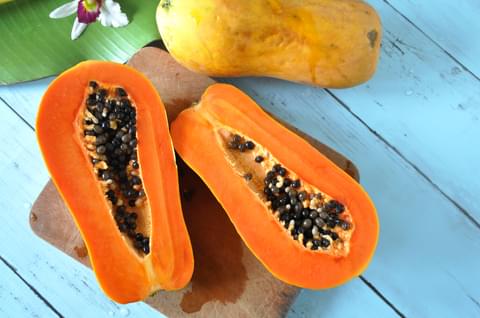

Papain: Nature's Proteolytic Powerhouse
In the world of protein hydrolysis, few enzymes rival the potency and versatility of papain. From enhancing protein digestibility to promoting sustainable solutions, papain offers a myriad of advantages across industries.
In the world of protein hydrolysis, few enzymes rival the potency and versatility of papain. Derived from the papaya fruit, this proteolytic enzyme has garnered attention for its remarkable ability to break down proteins into smaller peptides and amino acids. In this post, we'll delve into the functionality and benefits of papain for protein hydrolysis.
Papain belongs to a class of enzymes known as cysteine proteases, characterised by their ability to cleave the peptide bonds in proteins. It is naturally present in the latex of unripe papaya fruits (Carica papaya) and has been used for centuries in traditional medicine for its digestive properties.
Functionality of Papain in Protein Hydrolysis:
- Proteolytic Activity: Papain's primary function lies in its ability to catalyse the hydrolysis of proteins. It targets specific peptide bonds within protein molecules, breaking them down into smaller fragments, including peptides and amino acids.
- Specificity: While papain exhibits broad substrate specificity, it tends to preferentially cleave peptide bonds adjacent to amino acids with large hydrophobic side chains, such as phenylalanine, tyrosine, and tryptophan.
- Optimal Conditions: Papain functions optimally under slightly acidic conditions (pH 6-7) and moderate temperatures (approximately 50-70°C). These conditions ensure maximum enzymatic activity and efficiency in protein hydrolysis processes.
Benefits of Papain for Protein Hydrolysis:
- Enhanced Digestibility: By breaking down complex proteins into smaller peptides and amino acids, papain facilitates easier digestion and absorption of nutrients in the gastrointestinal tract. This property makes it particularly valuable in the food and pharmaceutical industries for producing protein hydrolysates with improved bioavailability.
- Functional Food Applications: Papain finds extensive use in the production of functional foods and dietary supplements aimed at enhancing protein utilisation and promoting overall digestive health. It can be incorporated into protein shakes, nutritional bars, and sports supplements to boost protein digestibility and absorption.
- Biotechnological Applications: Beyond its role in food and nutrition, papain is also utilised in various biotechnological processes, including the production of peptide-based drugs, isolation of proteins for research purposes, and in the textile industry for fabric softening treatments.
- Natural and Sustainable: As a naturally occurring enzyme derived from papaya fruit, papain offers a sustainable and eco-friendly alternative to chemical methods of protein hydrolysis. Its biodegradable nature and low environmental impact make it an attractive choice for industries seeking greener solutions.


Papain stands as a testament to nature's ingenuity, offering a powerful tool for protein hydrolysis with a host of functional and nutritional benefits. From improving digestibility and bioavailability to enabling sustainable biotechnological applications, the versatility of papain continues to captivate researchers and industry professionals alike. Embracing this enzymatic wonder opens doors to a world of innovation and opportunity in the realm of protein modification and beyond.
If you would like to place an order or would like more information on our liquid and powder papain products and how they can be applied in different applications, click below: